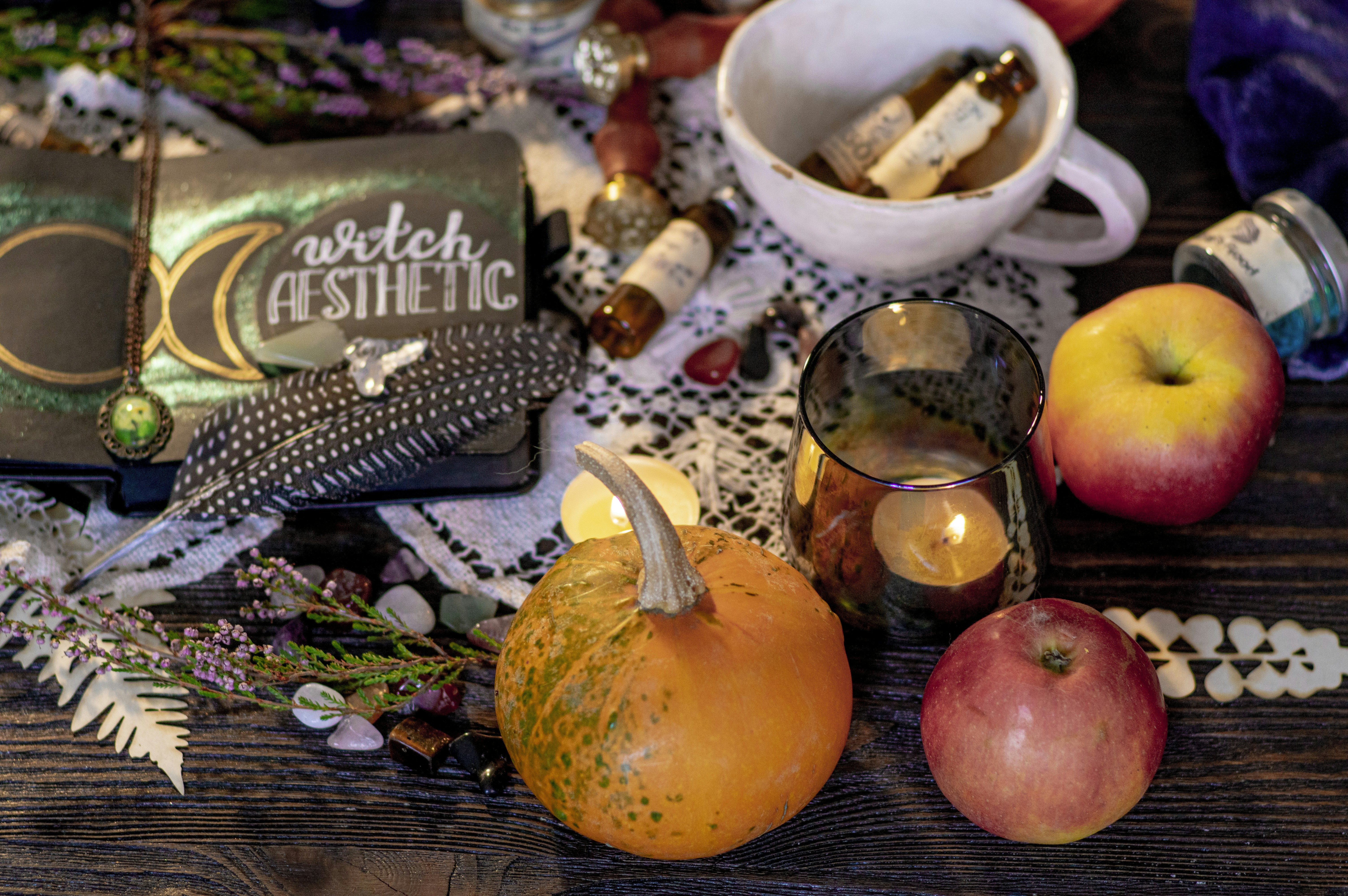Introduction to Everyday Witchcraft
The concept of everyday witchcraft has emerged as a notable trend within modern spiritual practices, reflecting a significant cultural shift in how witchcraft is perceived. Once characterized by secrecy and mysticism, witchcraft is now increasingly seen as an accessible and relatable practice that anyone can engage in. This transition is largely attributed to evolving societal attitudes and the influential role of social media platforms, which have served as vibrant communities for like-minded individuals seeking to explore their spirituality.
Historically, witchcraft was often shrouded in stigma and fear, leading to a concerning narrative that surrounded those who identified with such practices. However, in recent years, there has been a marked change in this perception. Everyday witchcraft invites practitioners to incorporate elements of magic into their daily routines, thus normalizing the practice and broadening the definition of what it means to be a witch. No longer confined to grand rituals or covens, this form of witchcraft emphasizes personal spirituality and the significance of individual experiences.
Social media platforms like Instagram, TikTok, and Pinterest have played a crucial role in facilitating the rise of everyday witchcraft. Here, users can share their practices, rituals, spells, and insights with an audience, fostering a sense of community and belonging. The visual nature of these platforms allows for creativity, as practitioners showcase their tools, altars, and magical creations, making the practice more tangible and inviting for newcomers. By democratizing witchcraft, social media empowers individuals to find their own unique paths and encourages them to embrace their personal spirituality, transcending traditional boundaries and definitions.
As we delve deeper into the phenomenon of everyday witchcraft, it becomes clear that this movement is less about rigid structures and more about personal expression. It reflects the growing desire for a spiritual framework that aligns with contemporary life, emphasizing mundane practices and self-care as forms of magic. This evolution highlights the inclusive nature of witchcraft today, redefining its relevance in the lives of many people.
The Influence of Social Media on Witchcraft Practices
In recent years, social media platforms such as Instagram, TikTok, and Pinterest have significantly impacted the way witchcraft is practiced and perceived. These platforms have become virtual gathering spaces for practitioners and enthusiasts, allowing them to share their knowledge, rituals, spells, and daily practices with a broader audience. The rise of everyday witchcraft can be attributed, in part, to the accessibility and visual nature of these platforms, where users can easily engage with content that resonates with them.
The use of specific hashtags has further contributed to the proliferation of witchcraft content online. Hashtags like #WitchTok and #SpiritualTikTok have created communities that encourage participation and exploration of various practices. This democratization of information allows individuals to discover and learn about witchcraft in a supportive environment, leading to increased interest and involvement. Furthermore, the visual aspect of platforms like Instagram and Pinterest allows practitioners to showcase their rituals and creations, transforming them into aesthetically pleasing content that can attract more followers and inspire others.
Additionally, the supportive nature of these online communities provides motivation for individuals to engage in witchcraft as a regular aspect of their lives. Community support, through likes, shares, and comments, fosters an environment where individuals feel validated in their practices. Many practitioners share their experiences with everyday spells, charms, and rituals, emphasizing that witchcraft is not limited to elaborate ceremonies but can be incorporated into daily routines. This pervasive sharing of experiences contributes to a perception of witchcraft as an approachable and relatable practice, significantly altering its traditional image.
Democratization of Spirituality
In recent years, social media has played a pivotal role in the democratization of witchcraft and spirituality, offering a platform for those looking to explore their beliefs outside the confines of traditional religious institutions. This new digital landscape affords individuals the freedom to share, learn, and practice their spiritual paths openly, promoting an environment where diverse forms of witchcraft can flourish. As a result, marginalized voices that may have been previously overlooked or silenced within conventional spiritual frameworks are now able to contribute to a broader dialogue about contemporary practices.
Social media platforms, such as Instagram, TikTok, and YouTube, have become vibrant hubs for various witchcraft communities. These spaces enable users to exchange knowledge, personal experiences, and rituals, ultimately fostering a sense of belonging and empowerment among practitioners. The ease of access to information allows individuals to learn about different traditions, spells, and magical tools, empowering them to curate their unique spiritual practices. This transcends geographic boundaries, uniting people from different backgrounds and beliefs in a shared quest for understanding and connection.
Moreover, the emphasis on authenticity and personal expression in these digital realms encourages practitioners to embrace diverse practices that resonate with them personally. This trend away from orthodoxy is a significant shift in the landscape of spirituality, as it acknowledges the validity of various interpretations of witchcraft while encouraging inclusivity. Additionally, individuals who were once hesitant to express their beliefs can now do so in supportive spaces, furthering the sense of community and engagement. Consequently, social media is not only facilitating the democratization of spirituality but also transforming the way people perceive and relate to witchcraft in the modern world.
Explore Our Powerful Magic Spells
Choose a spell that suits your needs and experience real results today!
Mundane Magic: Applying Witchcraft to Daily Life
Mundane magic, often referred to as everyday witchcraft, involves the incorporation of magical practices into one’s daily routine, transforming ordinary moments into opportunities for enchantment and intention-setting. This practice emphasizes the belief that each aspect of life holds potential for creativity and spiritual growth. For practitioners, mundane magic serves as a tool for empowerment, allowing individuals to engage with their environment in a more meaningful way.
One of the simplest and most effective methods of applying mundane magic is through the use of affirmations. These positive statements are meant to reinforce self-belief and focus one’s energy toward achieving specific goals. By verbalizing these affirmations daily, individuals affirm their intentions and create a sense of commitment to their aspirations. This modern practice allows for self-reflection and personal growth, as affirmations can be tailored to suit an individual’s unique journey.
Another vital aspect of mundane magic is the creation of altars or sacred spaces. Practitioners often dedicate a small area in their home to serve as a focal point for their magical practices, adorned with items that resonate with their spiritual beliefs. This might include crystals, photos, candles, or other personal artifacts. A daily ritual of tending to this space cultivates mindfulness and allows individuals to connect with their inner selves while reinforcing their intentions within the context of their everyday lives.
Setting intentions for mundane tasks, such as cooking or cleaning, can also infuse ordinary activities with magic. By approaching these tasks with the mindset of creating positive energy, individuals can transform chores into opportunities for growth and reflection. Each of these practices exemplifies how mundane magic is not solely about spell-casting or rituals; it is about embracing the small, everyday choices that bring a layer of enchantment and intention to life.
Community and Connection in Virtual Witchcraft
The advent of social media has significantly transformed the landscape of witchcraft, allowing practitioners to cultivate a sense of community and connection that transcends geographical boundaries. In recent years, digital platforms have emerged as vital spaces for individuals engaging in everyday witchcraft to share their experiences, gain insights, and foster supportive relationships. The emergence of virtual covens, online forums, and specialized groups caters to this ever-expanding network of practitioners, promoting a cohesive environment for learning and growth.
Virtual covens serve as modern iterations of traditional gathering spaces where individuals can come together to practice their craft. These online communities enable participants to collaborate on rituals, discuss spell work, and provide emotional support. The intimacy of these interactions promotes a deep sense of belonging, even for those who may feel isolated in their physical environments. Through live-streaming events or video chats, practitioners exchange knowledge and engage in activities ranging from guided meditations to tarot readings, reinforcing their connections and creating lasting relationships.
In addition to virtual covens, numerous online forums and social media groups provide platforms for individuals to seek guidance and share their magical experiences. These spaces promote an open dialogue where members can ask questions, share spells, or discuss the ethical implications of their practice. The accessibility of resources, combined with the diverse perspectives shared across these platforms, enriches practitioners’ understanding of witchcraft. This collaborative atmosphere not only enhances individual practices but also contributes to the wider community by normalizing discussions about spirituality and resilience in everyday life.
Ultimately, the sense of community and connection fostered through these digital channels is indicative of the evolving nature of witchcraft. As practitioners continue to seek camaraderie and encouragement from like-minded individuals in the virtual realm, everyday witchcraft is increasingly embraced, celebrated, and understood as a valid and empowering facet of modern spirituality.
Modern Symbols and Practices in Everyday Witchcraft
In recent years, social media has catalyzed a significant resurgence in everyday witchcraft practices, introducing a diverse array of symbols and rituals that resonate with practitioners across the globe. Among the most popular symbols are crystals, herbs, and tarot cards, each reinterpreted to find meaning in daily life. These symbols, once relegated to the realm of traditional witchcraft, have been adapted to meet contemporary needs and aesthetics, bridging the gap between the ancient and the modern.
Crystals, for example, have become ubiquitous in everyday spaces. Their allure lies not only in their beauty but also in their purported metaphysical properties, which practitioners believe can influence emotional, spiritual, and physical well-being. Many people include crystals in their daily routines, employing them as tools for manifestation or meditation. To meaningfully incorporate crystals, one might start by selecting a few specific stones that resonate with personal goals, such as rose quartz for love or amethyst for clarity, and place them in prominent areas within the home or carry them in a pocket for enhanced focus.
🛡 Powerful Protection Spells That Shield From Harm
Safeguard yourself, loved ones, and your home from negative energy and spiritual threats with effective, trusted protection spells.
Herbs are another fundamental component of modern witchcraft, often utilized for both their culinary and magical properties. Social media has popularized the use of herbs in rituals aimed at promoting wellness or intention-setting. For instance, one could begin by creating a simple herbal sachet using calming herbs like chamomile or lavender, which can be placed under a pillow or carried during stressful events for tranquility. This practice not only connects practitioners to the natural world but also enhances their daily experiences with intentional rituals.
Finally, tarot cards have transitioned from esoteric tools to commonplace items in everyday lifestyles. Many individuals have found empowerment in tarot as a means of self-reflection and guidance. Practitioners are encouraged to engage with their decks regularly, perhaps through a daily draw to gain insights or clarify intentions for the day. Such intentional interaction fosters a deeper relationship with the practice and perpetuates a sense of connection to one’s spiritual journey.
The Role of Self-Care and Healing in Witchcraft
The contemporary landscape of witchcraft has evolved significantly, with self-care and healing practices emerging as integral components of everyday magic. As the notion of witchcraft becomes increasingly accessible to a wider audience, particularly through social media platforms, many practitioners now emphasize the importance of mental and emotional well-being in their spiritual practices. This shift reflects a growing recognition of the therapeutic aspects of magic, where individuals utilize witchcraft not merely as a supernatural pursuit but as a means of cultivating resilience and inner peace.
Among the various methods adopted within this framework, mindfulness has gained considerable traction. Many individuals incorporate mindfulness practices into their daily routines, allowing them to foster a heightened awareness of their thoughts and feelings. This connection to the present moment enhances emotional regulation and stress management, which are essential elements of self-care. Furthermore, mindfulness encourages a reflective approach to life’s challenges, aligning perfectly with the principles of witchcraft that honor self-reflection and personal growth.
Herbalism, another prevalent practice within this realm, underscores the connection between nature and healing. Many practitioners explore herbal remedies as part of their self-care regimens, recognizing the benefits that various plants can offer. This approach can range from crafting simple herbal teas to creating infused oils that promote relaxation and healing. The appreciation for green magic not only connects individuals to nature but also allows for a profound exploration of traditional healing practices that have stood the test of time.
Additionally, rituals that promote emotional and mental well-being are gaining popularity within the witchcraft community. These rituals may involve creating safe spaces for reflection, setting intentions for healing, or engaging in practices such as journaling or meditation. Such activities enhance the holistic perspective of witchcraft, inviting individuals to explore their emotional landscapes while fostering self-love and acceptance.
Overall, the intersection of self-care, healing, and witchcraft is increasingly recognized as a vital aspect of modern magical practices. By embracing these principles, practitioners not only enhance their magical experience but also prioritize their mental and emotional well-being in a world that often demands resilience and adaptability.
Critiques of the Social Media Witchcraft Movement
The rise of everyday witchcraft, significantly amplified by social media, has garnered a myriad of critiques that raise concerns over authenticity, appropriation, and commercialization. One primary critique involves the question of authenticity; many long-standing practitioners of witchcraft view the social media portrayal of witchcraft as superficial or overly trend-driven. The emphasis on highly aestheticized images, often stripped of their cultural significance, may lead to the trivialization of deeply held beliefs and practices. This highlights the tension between genuine practitioners and those who engage in witchcraft primarily for aesthetic purposes or personal branding.
Additionally, the issue of appropriation merits attention. Critics argue that certain aspects of everyday witchcraft co-opt elements from marginalized cultures without proper acknowledgment or respect for their original context. As witchcraft practices from various traditions gain popularity, the risk of diluting cultural significance increases. This brings forth ethical questions regarding who has the right to practice or represent witchcraft and whether such representations contribute to the commodification of spiritual beliefs.
Conversely, there are perspectives that advocate for the movement within social media. One argument emphasizes the increased accessibility of witchcraft for individuals who may have previously felt excluded from traditional practices due to geographical, economic, or social barriers. Social media platforms provide a space for individuals to learn, share, and connect with a diverse community of practitioners, thereby fostering a sense of belonging and engagement within witchcraft. This increased visibility can also challenge stereotypes and foster a more nuanced understanding of what it means to identify as a witch today.
Despite its potential merits, the critiques surrounding the social media witchcraft movement prompt essential dialogues about how communal practices should evolve in the digital age, underscoring the importance of maintaining respect for the rituals and histories that inform them.
The Future of Everyday Witchcraft
The evolution of everyday witchcraft within the digital landscape heralds a promising future for practitioners and enthusiasts alike. As social media platforms burgeon with a cacophony of voices sharing their experiences and knowledge, the accessibility of witchcraft is expanding, giving rise to a diverse community. This community embraces a plethora of spiritual practices, symbolically interweaving tradition with modernity. The potential trends in everyday witchcraft signal a shift toward personalization, allowing individuals to tailor their spiritual journeys according to their unique beliefs and experiences.
Technology plays a significant role in shaping these unique practices, providing tools and platforms for aspiring witches to explore their craft. Online workshops, digital rituals, and community forums create an encouraging environment for individuals to learn and share their knowledge. Furthermore, the rise of augmented and virtual reality may soon allow practitioners to engage with their spirituality in novel ways, enhancing the immersive experience of rituals and spell-casting.
Additionally, as societal conversations around wellness, mental health, and self-care continue to gain momentum, many are turning to everyday witchcraft as a means of grounding themselves amidst the chaos. This intersection of spirituality and holistic practices underscores the importance of self-discovery and fostering a deeper connection with oneself. Consequently, we may anticipate an ongoing dialogue regarding spirituality where traditional norms are reexamined and redefined, allowing for more inclusive narratives that cater to the diverse fabric of society.
As the landscape of everyday witchcraft unfolds, it invites both seasoned practitioners and novices to partake in their personal journeys. By remaining open to emerging practices, trends, and technologies, individuals can cultivate a unique connection to their craft while continuing to honor the traditions that have been passed down through generations. Embracing this evolution may lead to a richer, more nuanced understanding of what witchcraft means today in a rapidly changing world.










